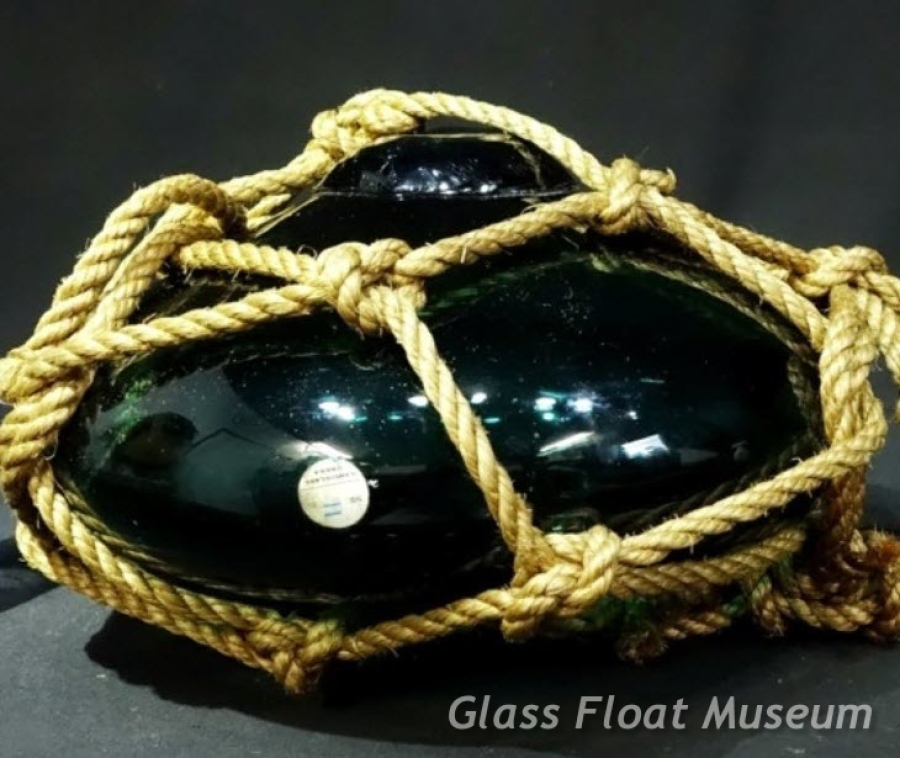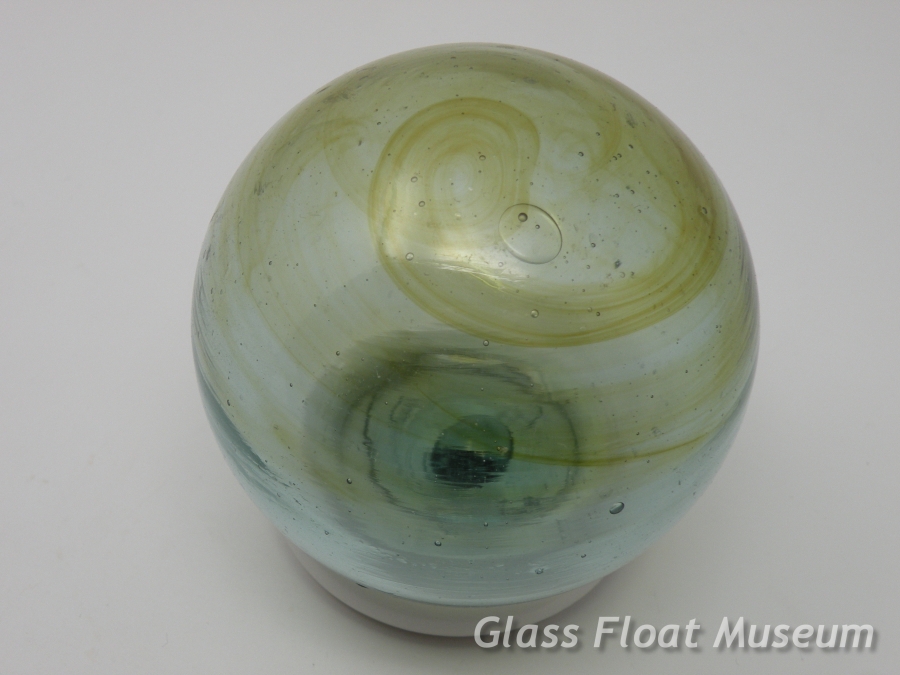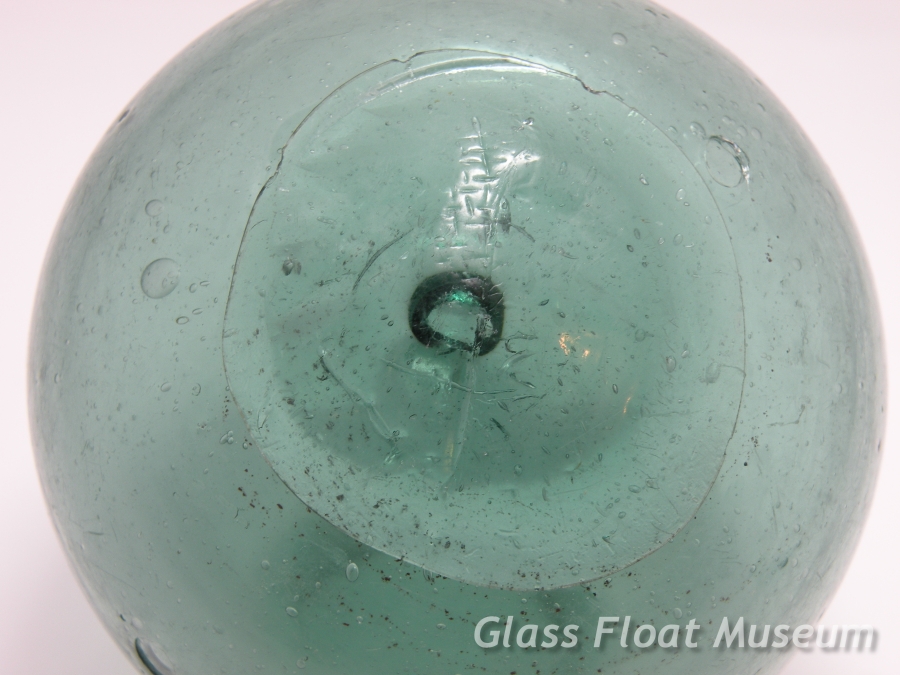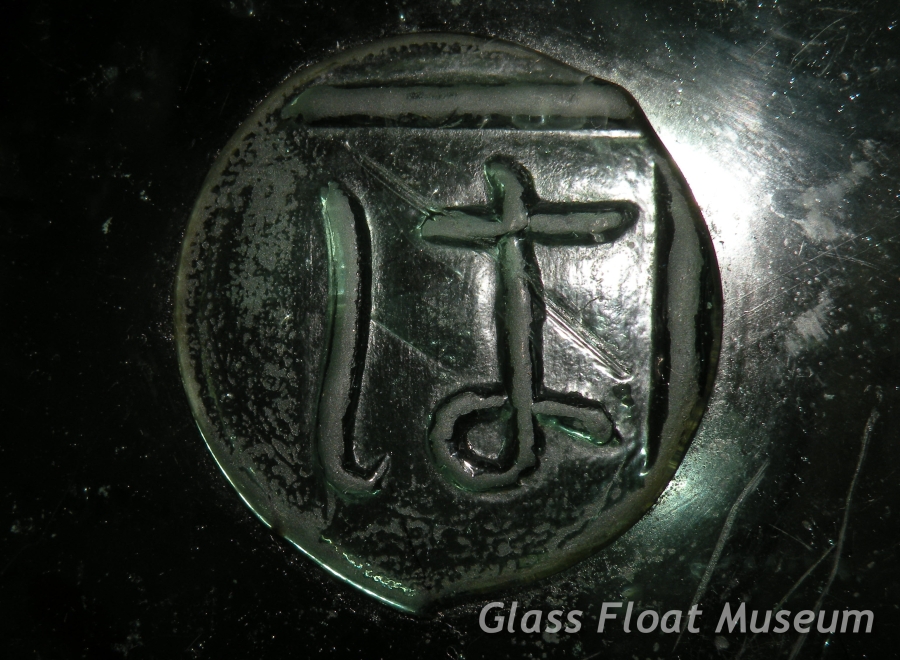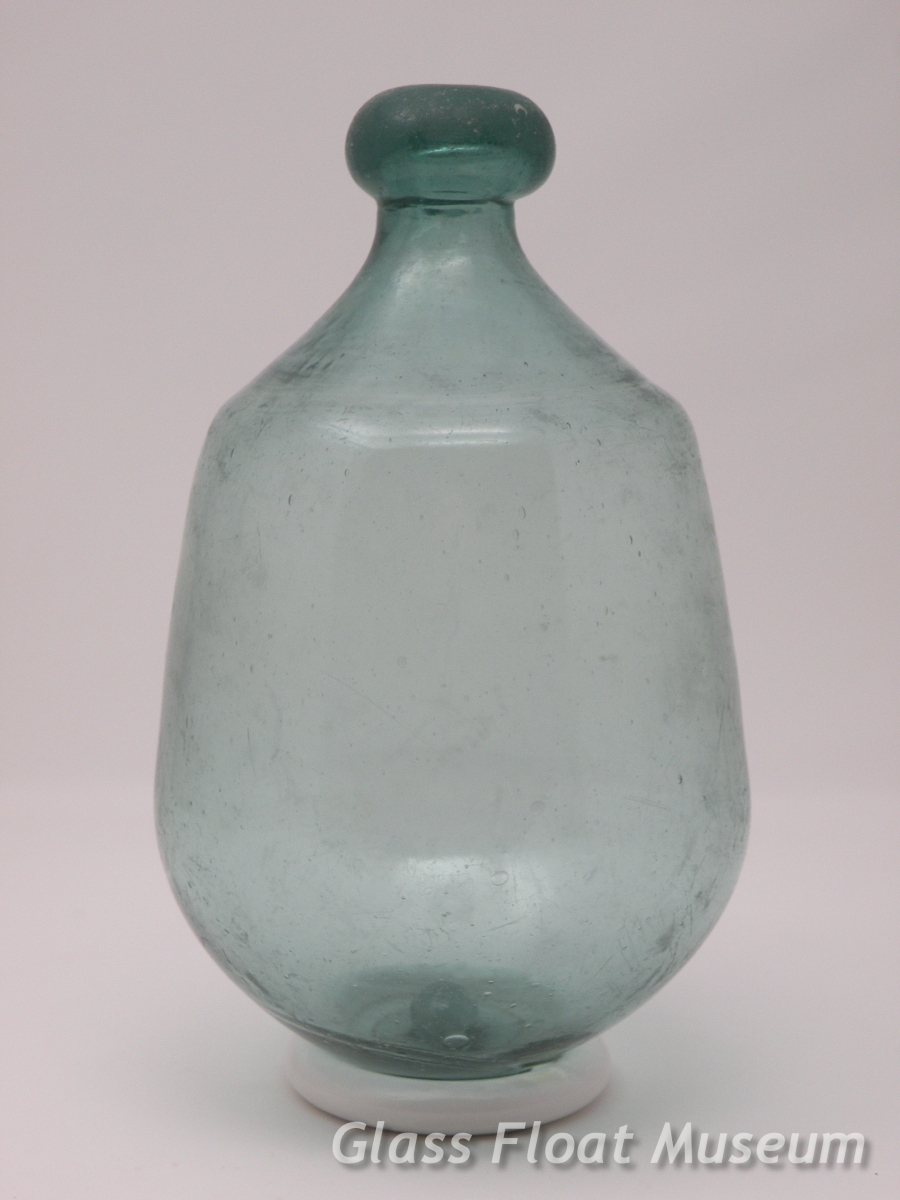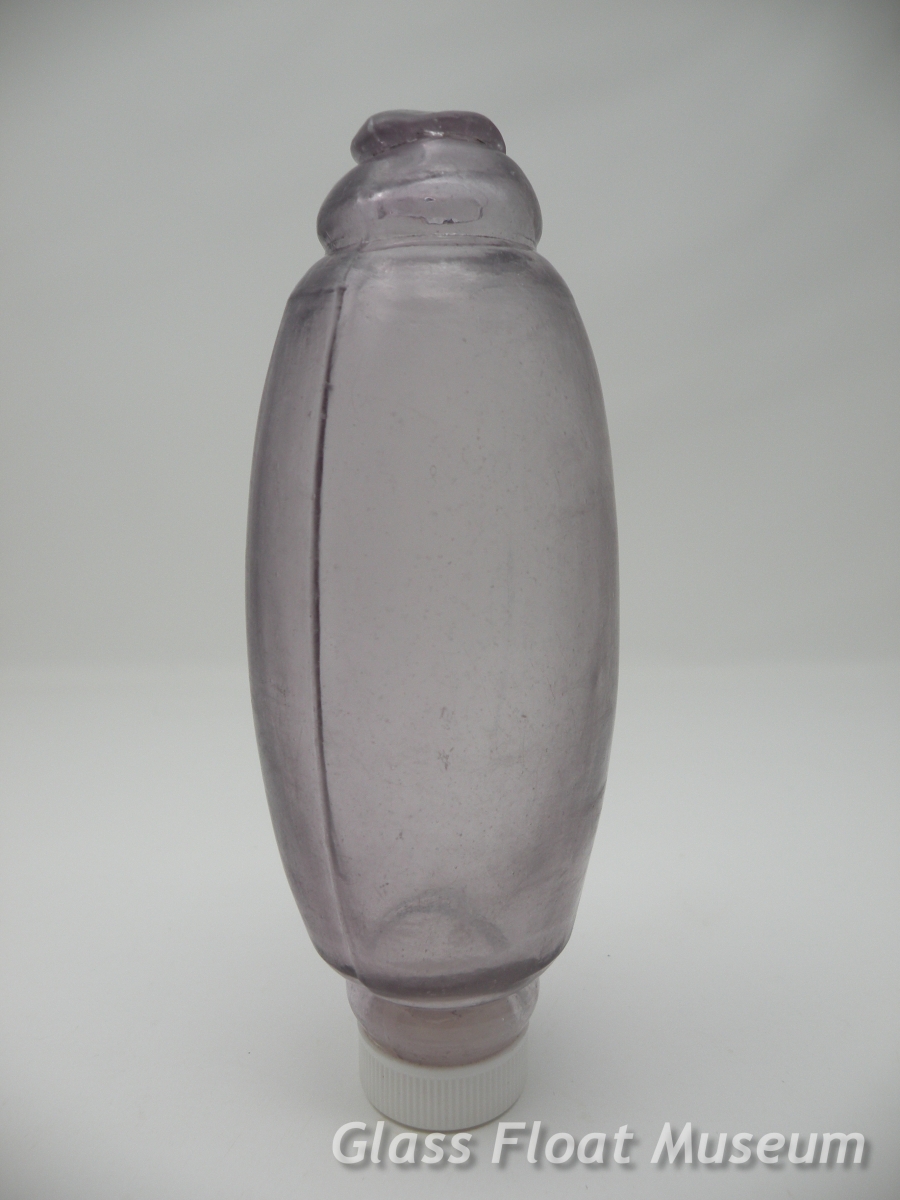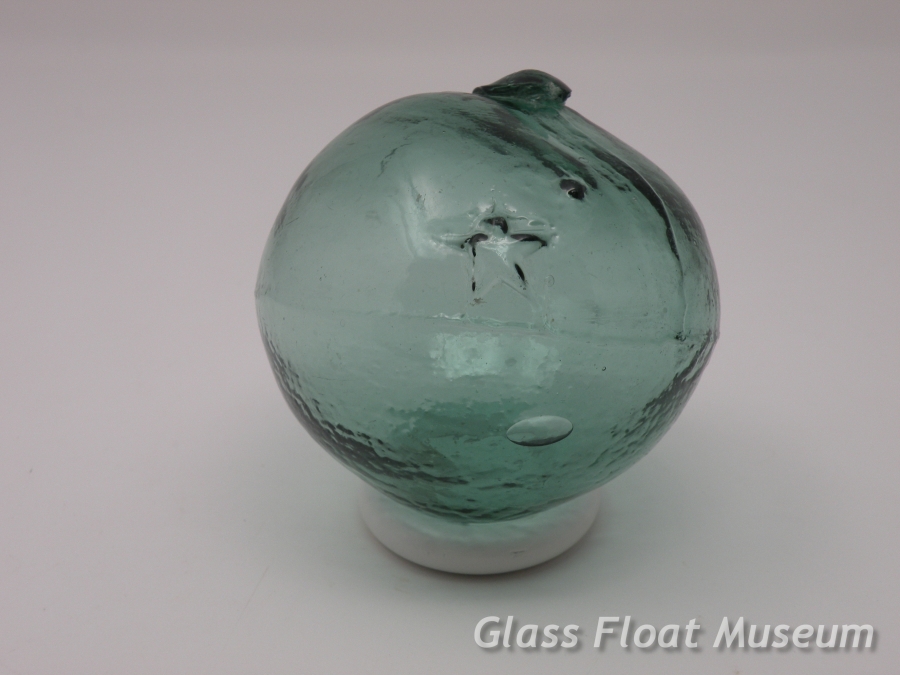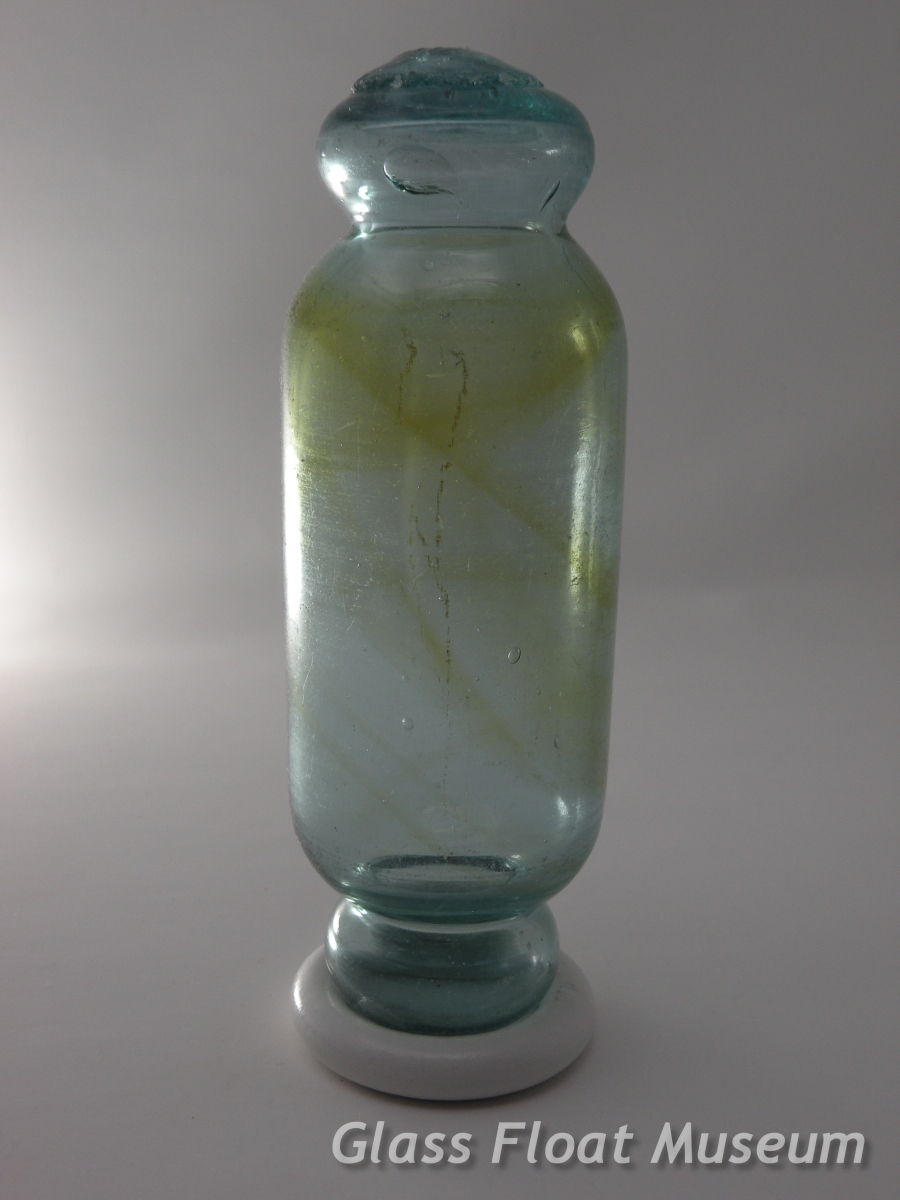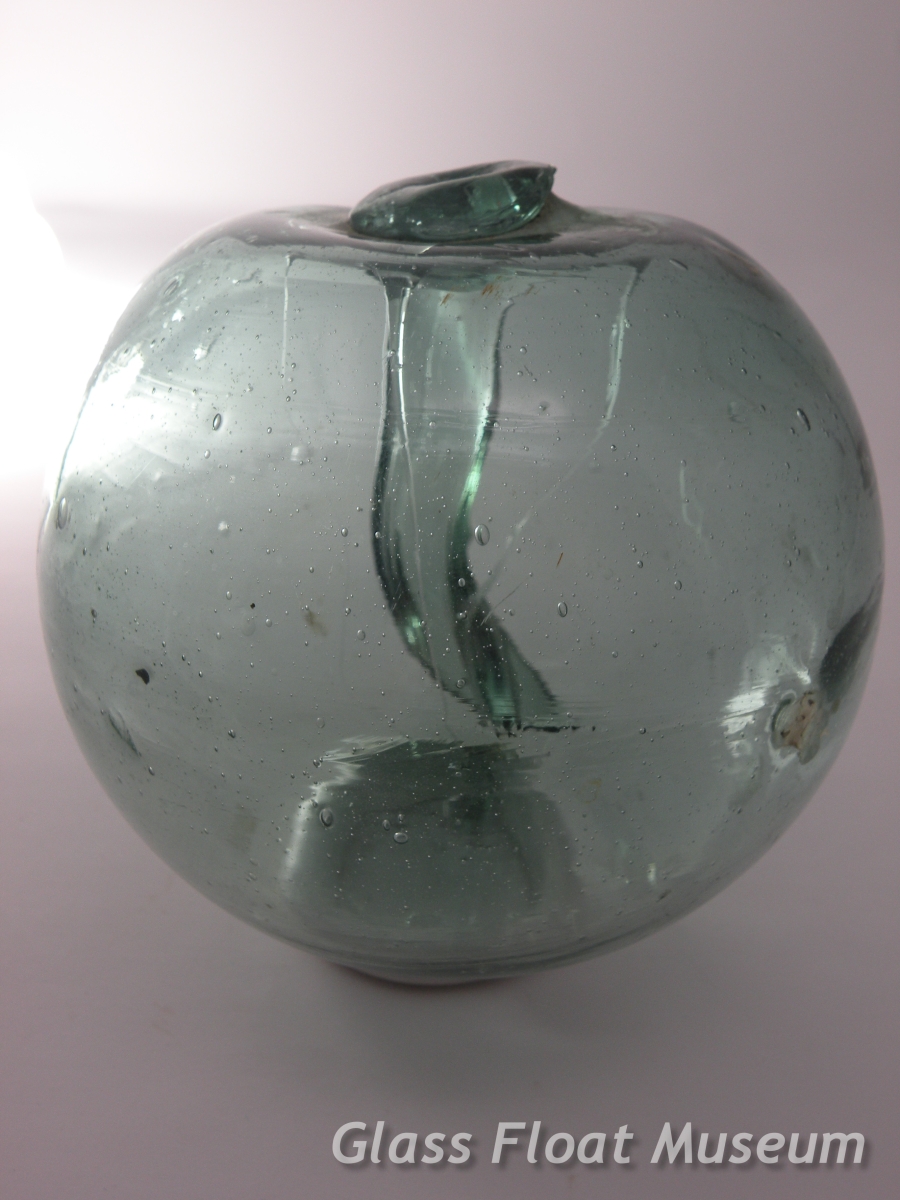
Keith Glein
This uniquely shaped Saucer Float was produced by the Kamei Glass Company in Osaka, Japan.
I did some research into the sticker on this float and I believe the style of the sticker is the same as other items produced by Kamei Glass in the 1970's. Kamei Glass produced many different glass items from the mid-1950's until 1991. They were most known for their glass vases.
The float was a very nice dark green color.
This saucer float measured 14 inches in diameter.
Unfortunately, this float was broken in shipping.
We are very fortunate that another larger Saucer Float is on display at the Westport Maritime Museum in Westport, Washington.
Yellow/Gold Swirls emanate from the base and spiral around this float.
The float has mark WP #10 'Rivermouth' stamp on the seal in a triangular configuration.
It measures 3 1/2 inches in diameter.
I cannot figure out if this is an undocumented mark, a partial mark, or a tool mark?
If this is a maker's mark, then the lettering is very tiny and intricate. Until I see another float that's similar to mine, I'll have to assume that this one was just some kind of tool marking anomally.
The float measures about 5 inches in diameter.
This simple bold mark is the Katakana symbol 'Su' ス. It's an undocumented mark.
This unique Su ス mark is the only example known to exist in collections. I think this is an extremely rare float that needs to be preserved for history.
The float itself measures 14 inches in diameter.
This float has excellent provenance. It was found by Kala & Aragon Ellwanger in the Noto Peninsula in Japan.
This undocumented mark is comprised of the Hiragana symbol 'Ha' は oriented at a 90 degree angle to a roof.
This unique Ha は mark is the only example known to exist in collections. I think this is an extremely rare float that needs to be preserved for history.
The float itself measures 48 inches in circumference or about 15 1/4 inches in diameter.
It shows lots of signs of use which may indicate that it's an older float, possiblly pre-WWII.
This float was purchased in Japan. The seller said that he had held this float for about 20 years. He had received it as a gift from a fisherman in Noto, Japan.
This Large One Knob was produced by Aenaes Glassworks in Norway.
Floats were produced by Aenaes during a 35 year period from the mid-1840's until 1881.
These large one knob floats are extremely rare. They are classified as OR #222 in Olaf Raabe's definitive book titled 'European Glass Fishing Floats'.
This float has excellent provenance having been found by Helga Lian in Norway in 2021.
Beside the distinctive shape Arrowhead Roller also stand out because of their large size.
This arrowhead float measures a full 8 inches in length.
These floats are truly rare. I've only heard of 3 or 4 of these floats in collections.
It has excellent provenance since Shannon bought it from Woody Woodward who found it in Northern Japan.
This Mold Line Roller has a very Sun-Turned cast to it. It’s rare to find them this sun-turned.
It has the distinctive mold line that defines its namesake.
This roller measures about 5 7/8 inches in length.
It has excellent provenance since Shannon bought it from Woody Woodward who found it in Northern Japan.
This old Russian Bi-Mold float has a 'Star with a Dot in the Middle' mark embossed on the shoulder of the float. It's a version of mark WP #291 but being a rare Russian bi-mold float it doesn't exactly fit the description as stated in Walt Pich's 'Marks'.
This float does have some light amber swirls that add character.
It measures about 3 inches in diameter.
It has excellent provenance because it was purchased from Alan Rammer as part of the ex-Stu Fransworth collection.
Three piece tri-mold floats with a Solid Star on the shoulder are not common. This could be mark WP #75.
This float is a first generation tri-mold as indicated by the smaller seal.
This float measures about 3 1/2 inches in diameter.
It has excellent provenance because it was purchased from Alan Rammer as part of the ex-Stu Fransworth collection.
Fine Amber Gold Swirls throughout this roller.
It has a couple of partial WP #10 'Rivermouth' marks on the seal.
It's a standard sized 6 inch long Hokkaido roller.
Amos Wood calculated the relative frequency of finding a spindle inside of a float at 1 - 1,500. I wonder what the odds of finding FOUR spindles inside of a float are?
Whatever the odds may be this float is extremely rare.
Floats with four spindles are also referred to as 'Quad Spindles'. This quad spindle has one super thick spindle and three spindles that are the more normal 'thread of glass' type spindles.
This is an authentic used glass fishing float, it even still has fish scales stuck on it.
The glass ball itself measures about 5 inches in diameter.
This quad spindle has excellent provenance having been purchased directly from the incredible Japanese collection sold by 'meelchan55'.
